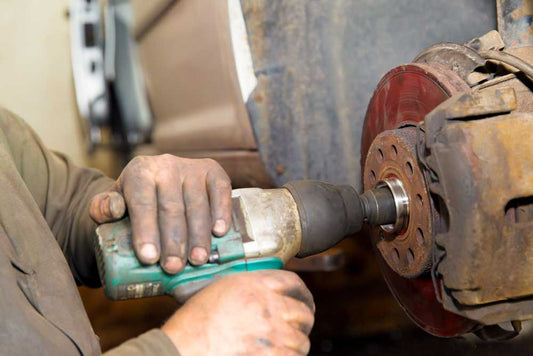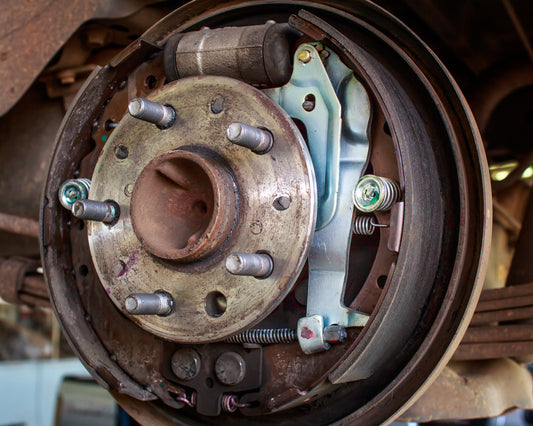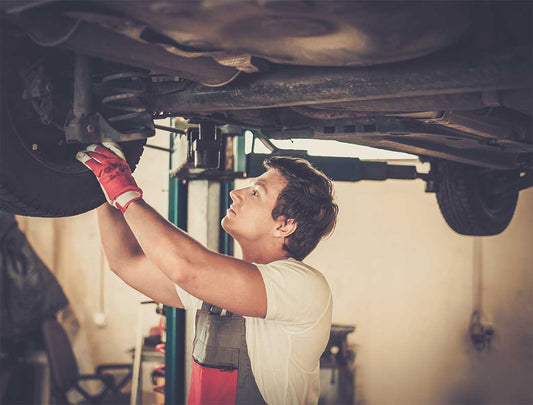Enter the old bag of tricks. Even though many techs have tried to perform the task of removing a broken bleeder, most do not have a great deal of success. Furthermore, mechanics have used all manner of methods to remove bleeder screws. Whether it be drilling, tapping, easy outs, heat, or even a combination of these, mechanics have tried it all. On the other hand, there is one method in particular that will work virtually every time. And the best part? It's not that difficult to perform.
Removing a Broken Bleeder Screw
First, the process will involve disassembling the caliper. Because of this, you should use a rebuild kit when available. If one is unavailable, then take great care when removing the dust boot and square-cut seal. Next, after stripping down the casting, mount it in a vise. Next, using a hacksaw, cut a screw slot in the top of the broken bleeder as in the image below. If the bleeder is flush with the housing, you will have to cut into the housing a small amount. This portion of the casting is a non-structural part, and if done correctly, this will not harm the caliper.
Heating the Bleeder Screw
Next, get a container big enough to fit the entire caliper housing and fill it with enough water to allow the caliper to be completely submerged. For instance, a mop bucket or 5-gallon pail works nicely. Now apply heat to the caliper housing around the bleeder screw as in the image below.
Once heated, grab the caliper with a pair of channel locks, remove it from the vise and set it in the bucket of water. Let the caliper sit there for a minute and then remove it and remount in the vise. Next, using a flat blade screwdriver that fits snug in the screw slot, attempt to remove the bleeder. It may be necessary to tap the screwdriver tip into the screw slot with a hammer to ensure a good fit. In most cases, the bleeder will come out without any problem (See Image Below). Occasionally there will be a burr on the threads, and you will have to work the bleeder back and forth until it comes out.

This process will "shock" the caliper housing serving to break the bond between the two parts. Many mechanics have used this method for years, and it has yet to fail. However, on a rare occasion, you'll have to heat it twice before the bond breaks. Likewise, you can also use this method on wheel cylinders. However, there are a few things to be careful of:
- Never attempt this on an aluminum caliper or wheel cylinder.
- Be sure to disassemble the wheel cylinder before heating it because heat can damage the internal rubber parts.
- Once you complete the job, always check the unit for leaks.
After Removing the Broken Bleeder Screw
After removing the bleeder, you're ready to reassemble the caliper. Start by cleaning the bore out with emery cloth if necessary, and rinse with hot water. Next, blow the housing dry with compressed air. As you begin the assembly process, it is essential to make sure your hands are clean. When installing the square-cut seal, piston, and dust boot, use either brake fluid or silicone as an assembly lube. Install the piston by hand, making sure not to cock it. If the unit uses a press-in dust boot, make sure to seat it completely. Complete the process by installing the slider hardware making sure to lube it properly. Finally, install the caliper and bleed it out, making sure to check for leaks.
More Mechanical Help
Are you looking for more help? Then consider joining our Facebook group or checking out some of our different articles. The group is a great place to interact with other mechanics, rant, and learn from others; just click the button below to join now.Facebook Group
More Articles




